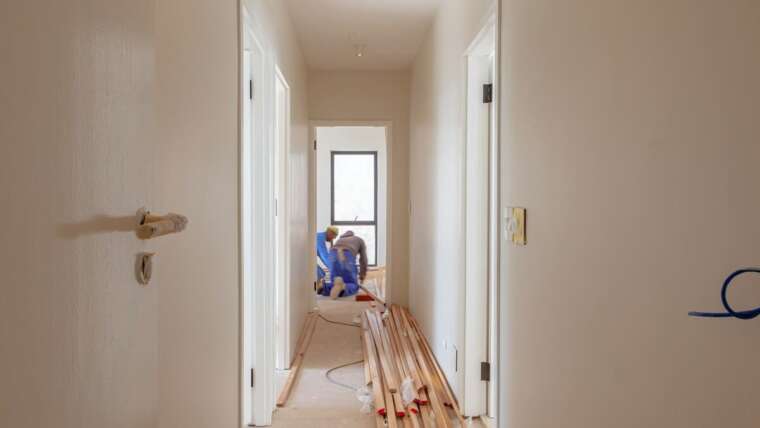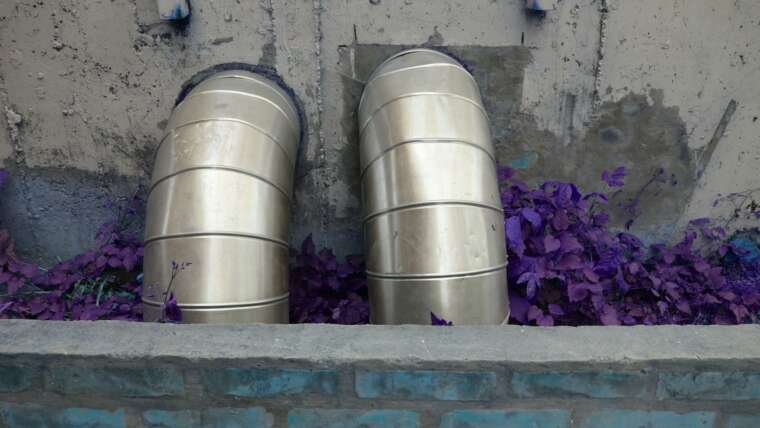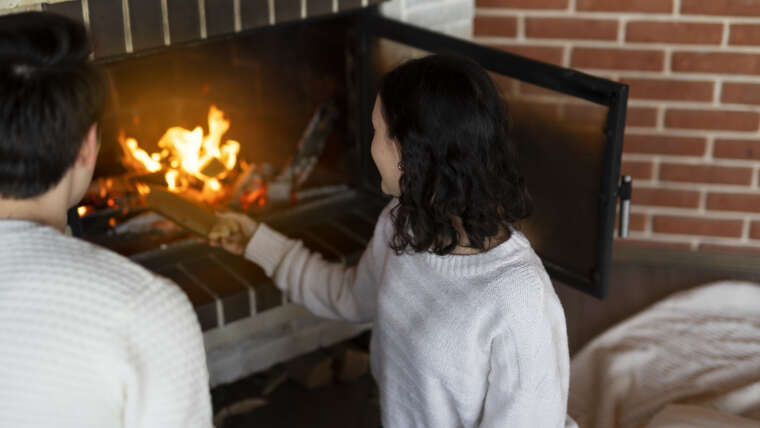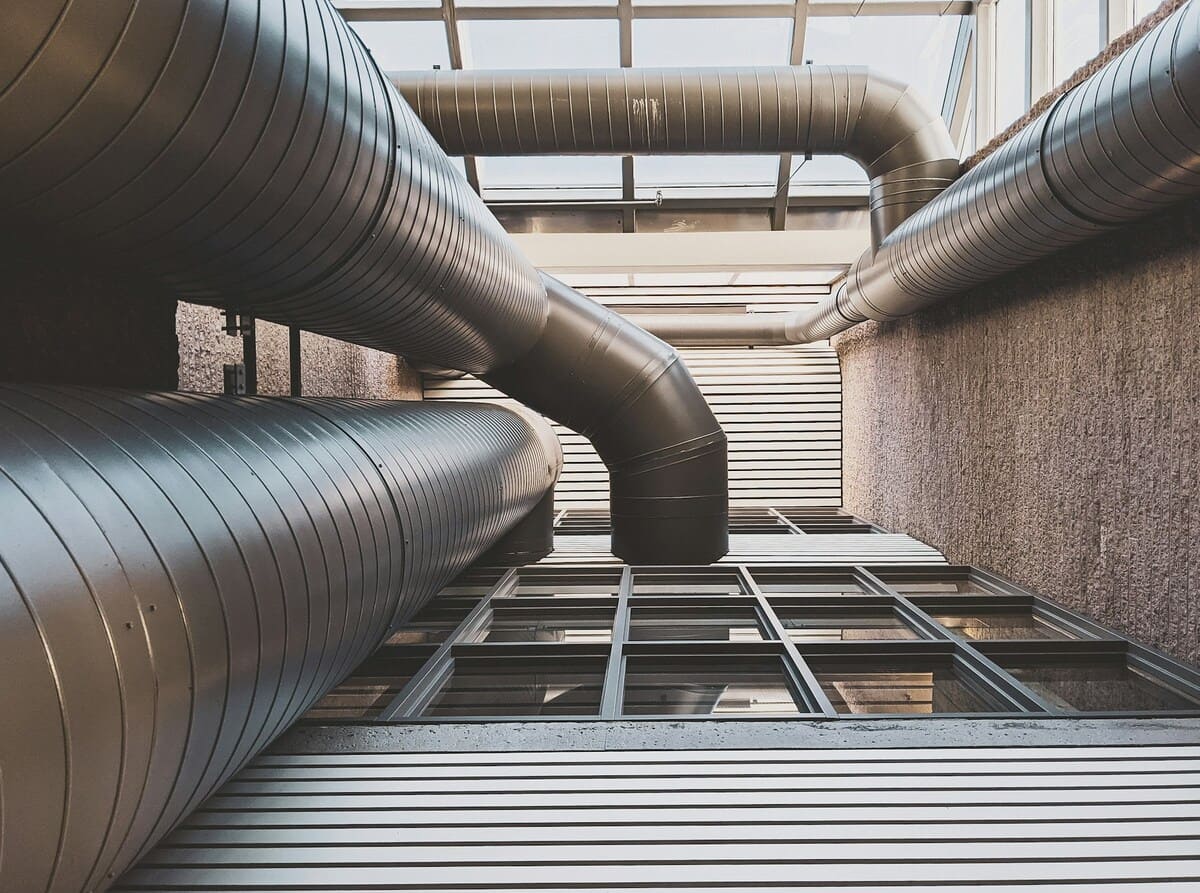
Indoor air quality is a critical factor in maintaining a healthy and comfortable living or working environment. Polluted indoor air can lead to a range of health issues, such as allergies, respiratory problems, and fatigue. Dust, allergens, and other contaminants circulating through your home or office’s ventilation system can significantly degrade the air quality. Clean air is essential not only for personal well-being but also for the proper functioning of HVAC systems.
Air ducts play a crucial role in distributing clean air throughout your space. However, when they become clogged with debris, dust, and mold, they can negatively affect the air quality. That’s why air duct cleaning to improve indoor air quality is not only recommended but necessary. In this article, we’ll explore how ductwork operates, why air ducts need cleaning, and how proper maintenance can enhance indoor air quality.
Ductwork is the network of tubes that circulates air from your HVAC system to different rooms in your home or office. It ensures the even distribution of conditioned air, whether cooled or heated, to maintain a comfortable environment. However, this continuous circulation of air also makes the ductwork susceptible to contamination. Over time, dust, dirt, and other pollutants can accumulate inside the ducts, reducing the system’s efficiency and air quality. Regular air duct cleaning is essential to ensure that your HVAC system operates at its best, allowing for cleaner air to be circulated through the building.
Why Do Air Ducts Need Cleaning?
Definition of Air Ducts and Their Functions
Air ducts are part of your building’s heating, ventilation, and air conditioning (HVAC) system. Their primary function is to transport conditioned air throughout your home or office, maintaining a consistent and comfortable indoor temperature. Whether it’s warm air during the winter or cool air in the summer, ducts ensure that air flows efficiently to different parts of the building. However, this airflow also picks up contaminants like dust, allergens, and even mold spores, which can build up inside the ducts over time.
Causes of Air Duct Contamination
Several factors contribute to air duct contamination:
- Dust and Dirt: Everyday activities like cooking, cleaning, and moving around produce dust and dirt that can be sucked into the air ducts.
- Allergens: Pollen, pet dander, and other allergens can settle inside the ducts, triggering allergies and other respiratory issues.
- Mold: Moisture buildup within the duct system can lead to mold growth, which can be hazardous to your health.
- Germs and Bacteria: Airborne pathogens can thrive in dirty air ducts, spreading illness throughout the home or office.
Signs that Air Ducts Need Cleaning
Not sure if your air ducts need cleaning? Here are some signs that indicate it might be time for a residential air duct cleaning or commercial air duct cleaning company.
- Increased dust accumulation on surfaces
- Unexplained allergies or respiratory issues
- Musty odors coming from the vents
- Visible mold growth in or around the ducts
- Decreased airflow or inconsistent temperatures across rooms
By recognizing these signs early, you can take timely action to schedule professional air duct cleaning and ensure cleaner, healthier air indoors.
Process Air Duct Cleaning
Proper air duct cleaning is a multi-step process that ensures the removal of contaminants from your duct system, leading to improved indoor air quality. Here’s a breakdown of the typical cleaning process:
1. Diagnosing the Condition of the Ducts
The first step in air duct cleaning to improve indoor air quality involves diagnosing the current state of your air ducts. Professionals often use cameras or scopes to inspect the interior of the duct system, checking for dust, debris, mold, and other contaminants. This diagnostic phase helps identify areas that need attention and allows for the most efficient cleaning plan.
2. Cleaning Process
Once the inspection is complete, technicians will use specialized equipment such as powerful vacuums, rotary brushes, and air whips to remove dust, dirt, and other debris from the ductwork. The cleaning process often begins with:
- Loosening Debris: High-pressure air or mechanical brushes are used to dislodge dust and dirt stuck to the duct walls.
- Vacuuming: A vacuum system is attached to the ductwork to remove the loosened particles. This step ensures that all contaminants are safely removed without recirculating into the building.
- Vent Covers and HVAC Components: Cleaning also extends to vent covers, air filters, and the interior components of your HVAC system to ensure a thorough job.
3. Final Disinfection
After the ducts are cleaned, a disinfectant may be applied to eliminate any lingering bacteria or mold spores. This final step ensures that the air circulating in your home or office is as clean and healthy as possible. Using eco-friendly disinfectants can help prevent future contamination without introducing harmful chemicals into your living space.
Special Equipment and Products for Cleaning
Professional air duct cleaners use advanced equipment like high-powered vacuums, air compressors, and rotary brushes to ensure a deep and effective clean. Additionally, they may use eco-friendly disinfectants and sealants that prevent mold and bacterial growth. This ensures a longer-lasting clean, especially when performed by a reputable professional air duct cleaning service.
Professional Cleaning vs. Independent Cleaning: What is Better?
While it may be tempting to attempt air duct and ventilation duct cleaning on your own, hiring an air duct cleaning company is often the better choice. Professionals not only have the right tools and experience but also ensure that every part of your ductwork is thoroughly cleaned and disinfected.
DIY cleaning typically lacks the proper equipment and can leave behind dust and allergens. Improper cleaning can also damage your ducts, leading to costly repairs. In contrast, professional cleaners ensure that your ducts are properly maintained and fully sanitized without any risk of damage.
The Truth About Air Duct Cleaning
 Air Duct Cleaning Improves Air Circulation. One of the key benefits of air duct cleaning is that it significantly improves air circulation throughout your home or office. Does air duct cleaning improve air flow? Yes, by removing dust, dirt, and other obstructions, air can flow more freely, which makes your HVAC system work more efficiently.
Air Duct Cleaning Improves Air Circulation. One of the key benefits of air duct cleaning is that it significantly improves air circulation throughout your home or office. Does air duct cleaning improve air flow? Yes, by removing dust, dirt, and other obstructions, air can flow more freely, which makes your HVAC system work more efficiently.- Air Ducts Should Be Cleaned Every 3-5 Years. A common recommendation is to have residential air duct cleaning every 3-5 years. Regular cleaning helps maintain clean air, improve system efficiency, and prolong the life of your HVAC system. This timeframe can vary based on factors like pets, smoking, and indoor air quality concerns.
- Air Duct Cleaning Eliminates Odors and Mold. Dust, mold, and other contaminants trapped in your duct system can lead to unpleasant odors. A professional furnace service and air duct cleaning not only removes these pollutants but also prevents mold from forming in the future, ensuring that the air in your home or office is fresh and free from musty odors.
- Air Duct Cleaning Does Not Harm Your Air Ducts. Some homeowners may worry that air duct cleaning could damage their HVAC system. Does air duct cleaning improve air conditioning? Absolutely, and the process is entirely safe for your ducts. Professionals use non-abrasive tools and techniques to clean the ducts without causing any damage. So, Does air duct cleaning improve air conditioning? Yes, it enhances the overall efficiency of your system while preserving its structural integrity.
By keeping your ducts clean, you ensure not only the longevity of your HVAC system but also contribute to better indoor air quality. Air duct cleaning is good for the air in your home and for your overall health.
How Air Duct Cleaning Improves Air Quality
Air duct cleaning plays a significant role in enhancing indoor air quality by removing harmful contaminants that can accumulate over time. These contaminants can include dust, allergens, mold spores, and bacteria, all of which circulate through your home or office if left unchecked.
- Removing Contaminants: How Dust, Allergens, and Other Particles are Removed. During air duct cleaning, professionals use specialized equipment like high-powered vacuums and brushes to dislodge and remove dust, allergens, and other particles from the ducts. This ensures that the air circulating in your home or office is free of contaminants, making it healthier and cleaner. How air duct cleaning improves air quality is evident through the noticeable reduction in airborne pollutants that can exacerbate allergies or respiratory issues.
- Reducing the Risk of Diseases Associated with Poor Air Quality. By removing allergens and germs from the ductwork, air duct cleaning helps to reduce the risk of health problems such as allergies, asthma, and respiratory infections. Poor indoor air quality can trigger or worsen these conditions, but regular cleaning ensures that the air you breathe is as clean as possible.
- Increased Energy Efficiency of the Air Conditioning and Heating System. Clogged ducts force your HVAC system to work harder to maintain a comfortable temperature. Clean ducts, on the other hand, allow air to flow more freely, improving the system’s efficiency. This means that air duct cleaning improves air conditioning and heating performance, leading to lower energy consumption and reduced utility bills.
How Often Should Air Ducts Be Cleaned?
Recommendations for Frequency of Duct Cleaning
As a general rule, it’s recommended to have air duct cleaning performed every 3 to 5 years. However, in certain conditions, such as homes with pets or smokers, more frequent cleaning may be necessary—possibly once a year.
Factors That Affect Cleaning Frequency
- Pets: Pet dander can quickly accumulate in the air ducts, making more frequent cleaning necessary.
- Smoking: Homes with smokers tend to have more contaminants in the air ducts, requiring more regular cleaning.
- Renovations or Repairs: Construction work generates dust and debris that can get trapped in the ducts, warranting a post-renovation cleaning.
Advantages of Professional Air Duct Cleaning
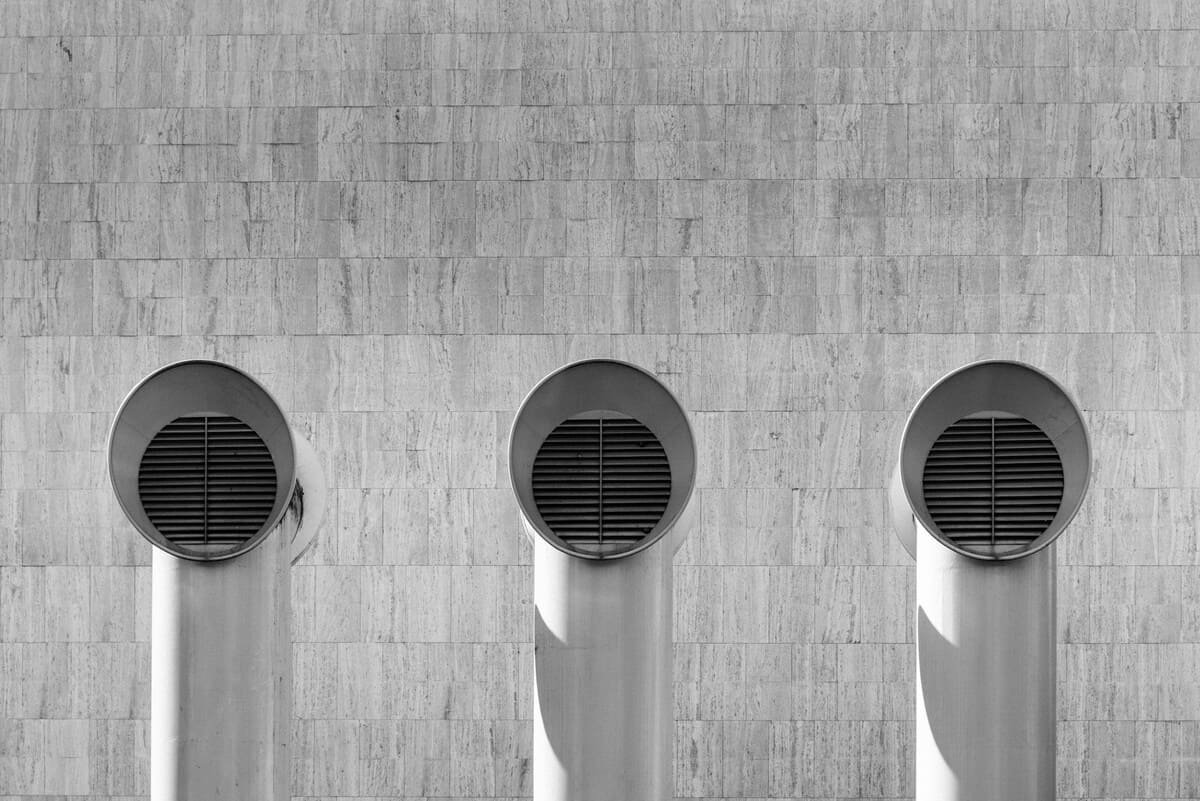 Guaranteed Results and Professional Techniques. One of the major advantages of hiring a professional air duct cleaning service is the guaranteed results. Certified professionals use advanced techniques and equipment to ensure that your ducts are thoroughly cleaned. They know exactly how to remove even the most stubborn contaminants without damaging your HVAC system.
Guaranteed Results and Professional Techniques. One of the major advantages of hiring a professional air duct cleaning service is the guaranteed results. Certified professionals use advanced techniques and equipment to ensure that your ducts are thoroughly cleaned. They know exactly how to remove even the most stubborn contaminants without damaging your HVAC system.- Time Savings and Reduced Risk of System Damage. Professional cleaners can complete the job much faster than someone doing it independently. Additionally, there’s less risk of damaging your ducts or HVAC system since professionals are trained to handle these tasks carefully and effectively. This time-saving aspect is particularly important for businesses that require air duct cleaning company services.
- Specialists Who Can Detect and Repair Hidden Problems. When you hire professionals for furnace service and air duct cleaning, they can also detect and address hidden problems such as leaks, mold growth, or blockages in your HVAC system. These issues, if left untreated, can compromise air quality and HVAC efficiency.
How to Choose a Company to Clean Your Air Ducts
What to Look for When Choosing. When selecting an air duct cleaning service, it’s essential to check the company’s experience, and customer reviews. A reputable service will have industry certifications, insurance, and positive feedback from satisfied customers. For example, Promaster Air Duct Cleaning – https://promasterairduct.com/ is an experienced and well-reviewed company offering reliable services.
How to Determine That the Air Duct Cleaner Has Done the Job Thoroughly
After the cleaning is completed, there are a few ways to ensure the job was done correctly:
- Visual Inspection: Use a flashlight to check inside the ducts. You should see no dust, debris, or mold.
- Air Quality Improvement: You should notice an improvement in air quality, with fewer dust particles and less musty odors.
- Improved Airflow: The airflow should feel stronger, and your HVAC system should run more efficiently.
Conclusion
Regular air duct cleaning is good for the air you breathe, your HVAC system’s efficiency, and your overall health. Whether it’s to remove contaminants, reduce the risk of diseases, or enhance energy efficiency, scheduling professional duct cleaning is a smart choice. With the help of a qualified air duct cleaning company you can ensure that your home or office enjoys clean, healthy air year-round.
FAQ
1. Does air duct cleaning improve air quality?
Yes, air duct cleaning improves air quality by removing dust, allergens, mold, and other contaminants from the ductwork. This ensures cleaner air circulates throughout your home or office, reducing the risk of respiratory issues and improving overall comfort.
2. How often should air ducts be cleaned?
It is generally recommended to clean your air ducts every 3-5 years. However, certain factors, such as having pets, smokers in the home, or recent renovations, may require more frequent cleanings—potentially once a year.
3. Does air duct cleaning improve air flow?
Yes, air duct cleaning improves air flow by removing debris that can block the ducts. Cleaner ducts allow air to circulate more freely, which can help improve the efficiency of your HVAC system.
4. Is air duct cleaning good for the air?
Yes, air duct cleaning is good for the air because it removes pollutants and allergens, resulting in cleaner air for you to breathe. It can also help to reduce unpleasant odors caused by mold, dust, or mildew in the ducts.
5. Does air duct cleaning improve air conditioning?
Absolutely. Air duct cleaning improves air conditioning by allowing the HVAC system to operate more efficiently. Clean ducts reduce the strain on the system, leading to better cooling and potentially lowering energy bills.
6. Can I clean my air ducts myself?
While it is possible to clean air vents on your own, a full air duct and ventilation duct cleaning requires specialized equipment and expertise. Hiring a professional air duct cleaning service ensures a thorough job without the risk of damaging the ductwork.
7. How can I tell if my air ducts need cleaning?
Some common signs that your air ducts need cleaning include:
- Excessive dust around the home
- Unpleasant odors coming from the vents
- Mold growth inside the ducts
- Allergy symptoms like sneezing or coughing that worsen indoors
- Reduced airflow or uneven heating/cooling in different rooms
8. Will air duct cleaning damage my HVAC system?
No, professional air duct cleaning is safe for your HVAC system when done correctly by trained technicians. In fact, it can improve the system’s efficiency and extend its lifespan.
9. What is the cost of air duct cleaning?
The cost of air duct cleaning depends on factors like the size of the duct system, the level of contamination, and your location. It’s best to contact an air duct cleaning company for a personalized estimate.

